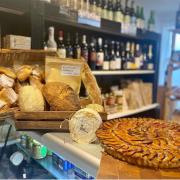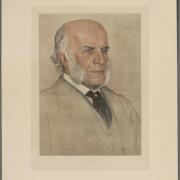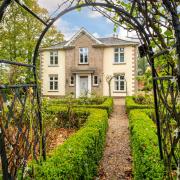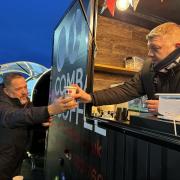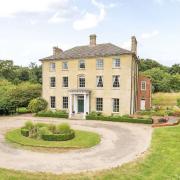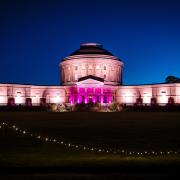Colin Barker's picture book tells the story of Ipswich's iconic trolleybuses - but it's also a window on 20th century life in the county town
It's not surprising that in this disposable, digital age nostalgia is thriving. Who isn't fascinated by photos, stories and images that shed light on what life was like in earlier times? And when it's the life of just two or three generations ago, it becomes even more captivating.
Take Colin Barker's book, Around Ipswich by Trolleybus. Trolleybuses are interesting and probably due a revival, given the trend towards EVs. But, for me, the joy of this book is the glimpse it offers into the recent past life of the county town. It's a book about trolleybuses... but about so much more as well.
Colin Barker hails from Derby originally and this is his second book on trolleybuses. He developed a childhood interest in them in the 1940s and wrote his first book about those in his home town. His only experience of Ipswich's trolleybuses is as an apprentice on a works trip to Stowmarket and Felixstowe. "As we passed the outer fringes of the town, in the distance I caught sight of a trolleybus parked on the Priory Heath depot forecourt," he recalls in his introduction.



Since 1991, when his job brought him to Suffolk, Ipswich has been Colin's adopted town, and now he's put together this superb book. Apart from an introduction about Ipswich's trolleybus history, Colin lets the photos tell the story, with full captions about the vehicles and their routes. He also highlights features in the town - familiar shops, streets, post-war housing estates along along the routes - plus there's a map showing the network operated by Ipswich Corporation Transport from 1947-1953, a fleet list and coverage of what happened to some of the vehicles after they were retired from service.
Trolleybuses operated in Ipswich from 1925, and for almost 30 years took people in Ipswich to work, school, shops, football matches, the cinema or wherever they needed to go. As Colin describes in his introduction, after World War I, Ipswich's electric tramway system was in a bad way, prompting discussions about replacing it. In September 1923, the Corporation ran a pilot trolleybus service between Cornhill and the railway station. Encouraged by its success, a referendum was held among ratepayers, only a minority of whom wanted to replace the trams with motorbuses. So the Corporation obtained an Act of Parliament to replace its trams with trolleybuses and put in an order for vehicles initially from Garretts of Leiston, and Ransomes Sims and Jeffries in Ipswich.

Ipswich was unusual in only operating a trolleybus service. Until 1934, the hub of the network was Cornhill. That year, extra services were laid on for the Royal Agricultural Show, which was held at Chantry Park in Ipswich and attended by HRH Prince of Wales. To cope with the crowds wanting to go to the show, additional turning facilities for the trolleybuses were installed at Electric House, the borough's electricity department a few hundred yards from the Cornhill, which then became a town centre trolleybus destination.
After World War II, a combination of factors made trolleybuses a less attractive option for the Corporation. They struggled to serve the new housing estates being built on the edge of town, there were fewer companies to build the vehicles and supply overhead equipment, plus nationalisation of the electricity industry made it difficult for the council to control electricity charges. In 1950, the first motorbus service was introduced, and the following year saw the beginning of a gradual withdrawal of trolleybuses over the next decade. The last Ipswich trolleybus made its final journey on August 23, 1963.


At 155 pages there are a lot of photos in this book, and they're captivating. Yes, there are lots of trolleybuses, but it's also a chronicle of 20th century Ipswich, much of it still recognisable. The ads on the side of the trolleybuses recall familiar local names, the streetscapes show shops and other buildings now replaced or repurposed. Spot Martin and Newby, Grimwades, Sneezum, Botwoods, Egerton, and Tolly Cobbold, among others. People going about their daily life in a bustling Ipswich town centre wear the fashions of the 40s and 50s. Policemen wear white oversleeves to direct traffic, uniformed trolleybus conductors carry hefty ticket machines strapped over their shoulders.


I lived in Ipswich between 1964 and 1970-ish, and while I'm too young to remember trolleybuses, I think I remember some overhead cables being taken down (or am I just being nostalgic?). But like so many other children, buses were a big part of my daily routine. I rode on them twice a day to school and back, via Cornhill and Electric House, along routes laid down by the trolleybuses, and some of the most recent photos in Colin's book are astonishingly familiar.

I caught the Whitton 9/9B to school and the Rushmere Heath 3/3A home, travelling just part of the route between Spring Road and St Matthews. I was always curious about the destinations on the front of the bus and one day decided to stay on the bus, going past my stop, all the way to each terminus, just to see what was there... a tuppenny adventure for an ten-year-old.
Around Ipswich by Trolleybus by Colin Barker is published by Adam Gordon. Available from transportstore.com, Waterstones, Amazon




